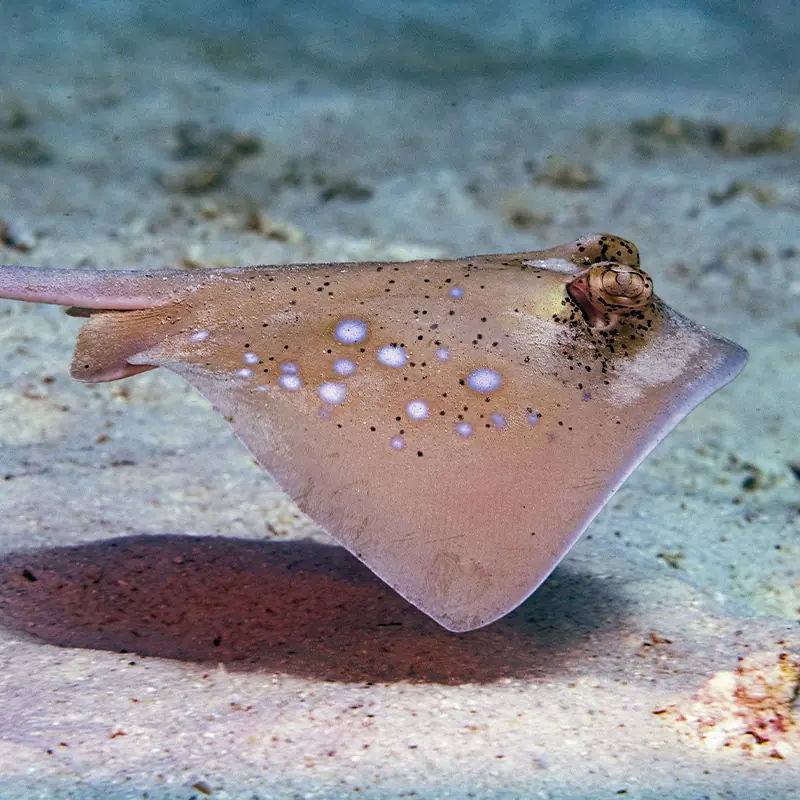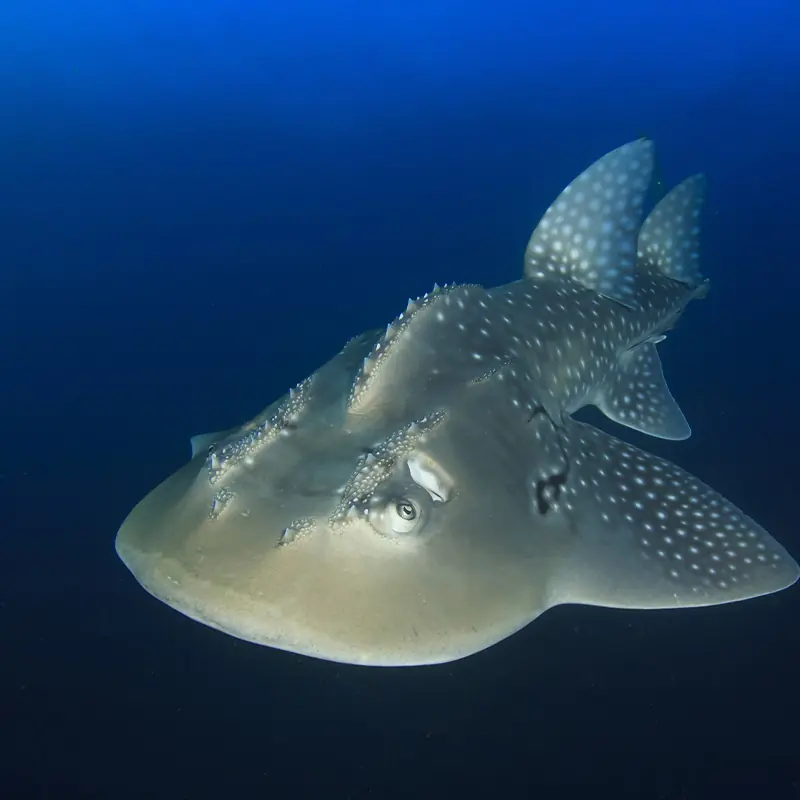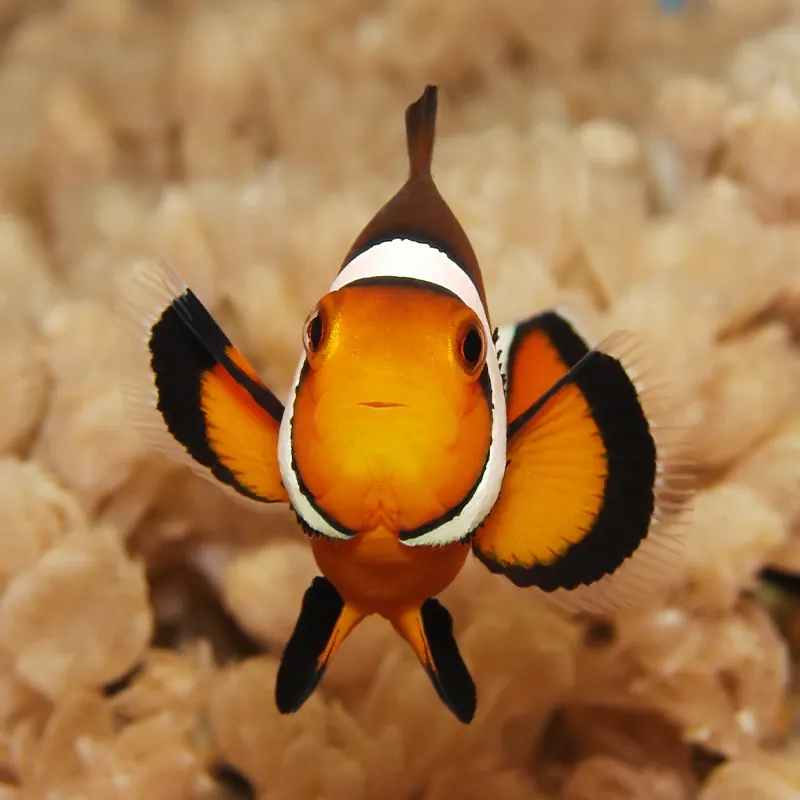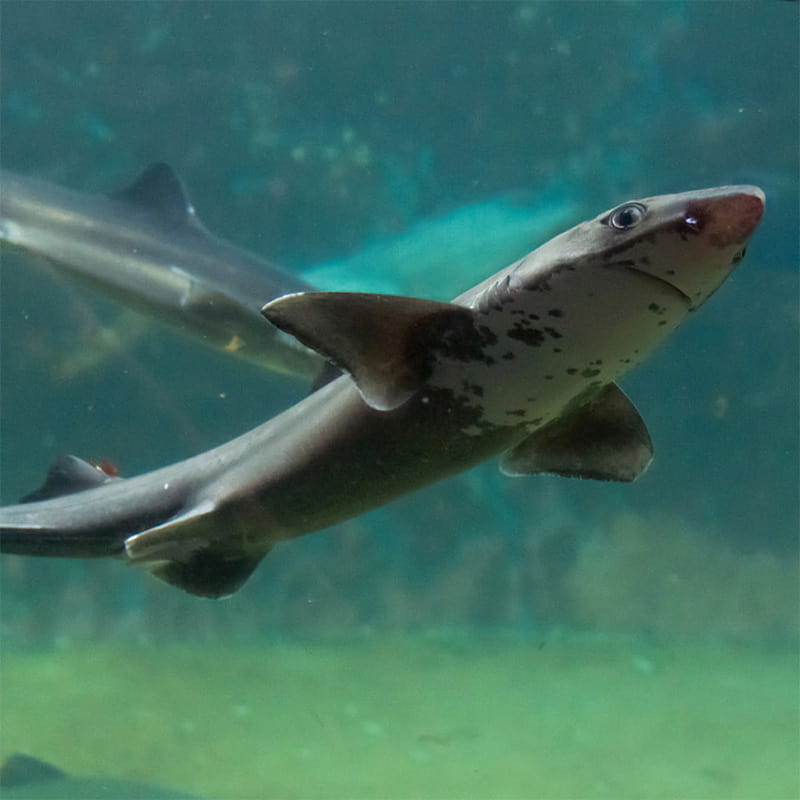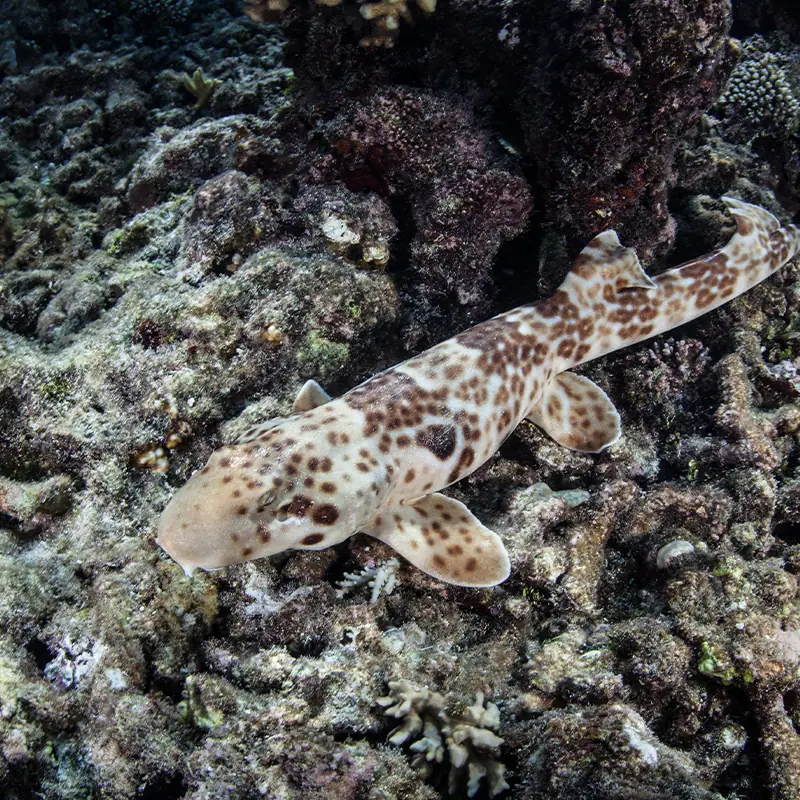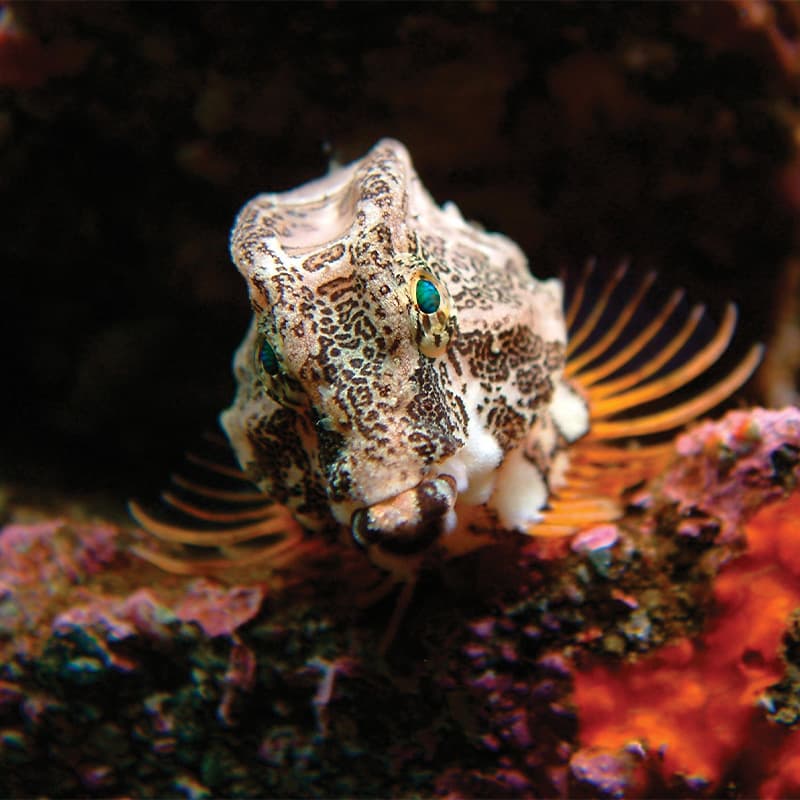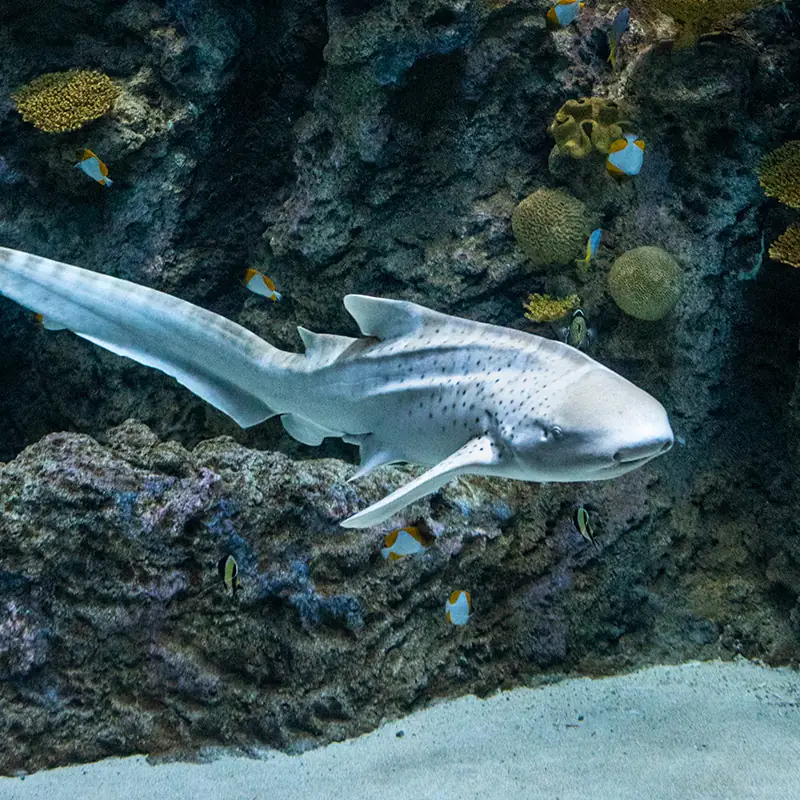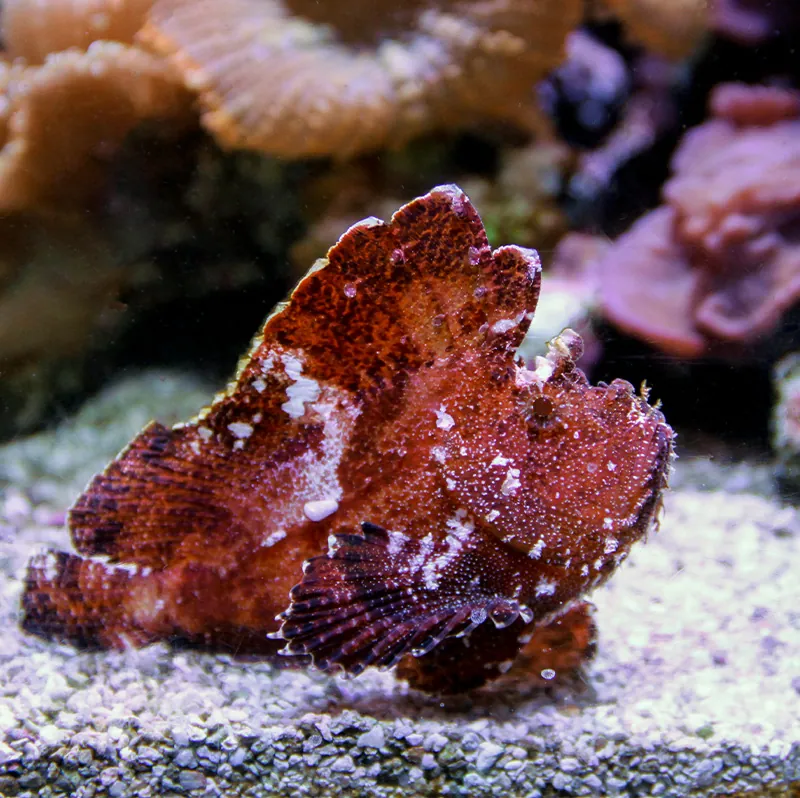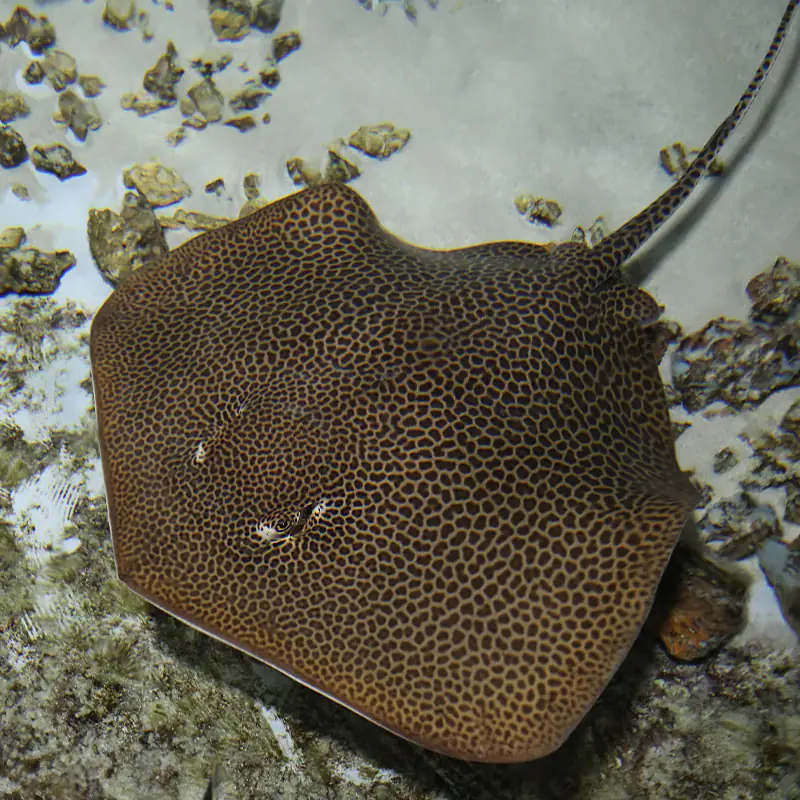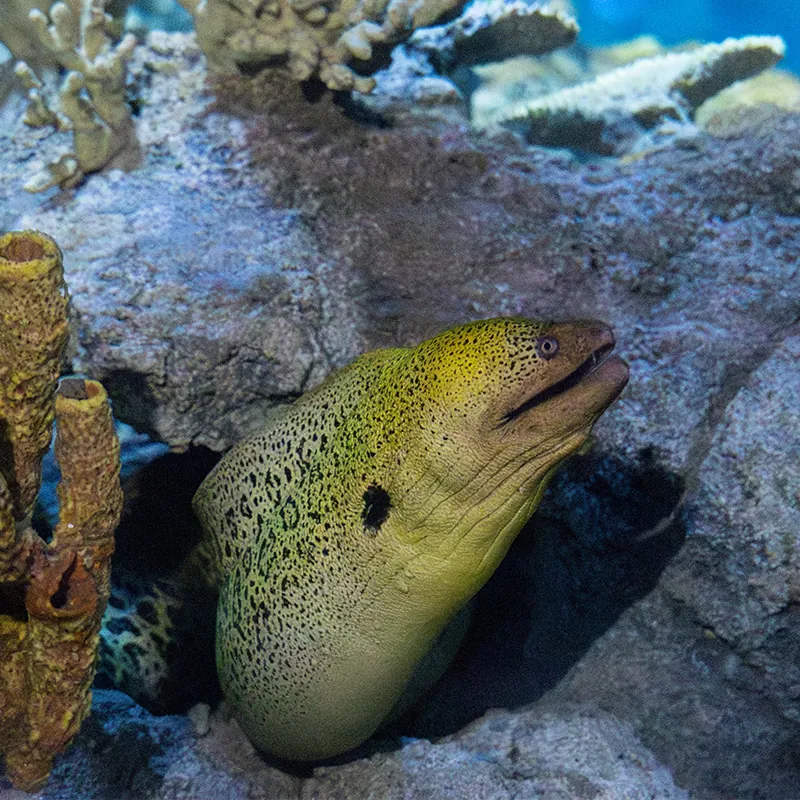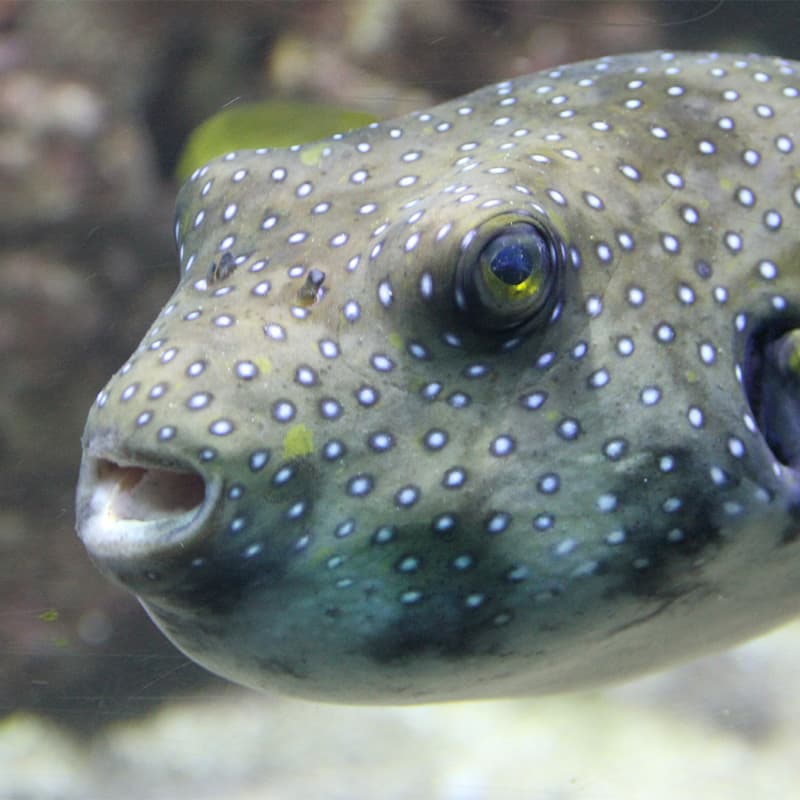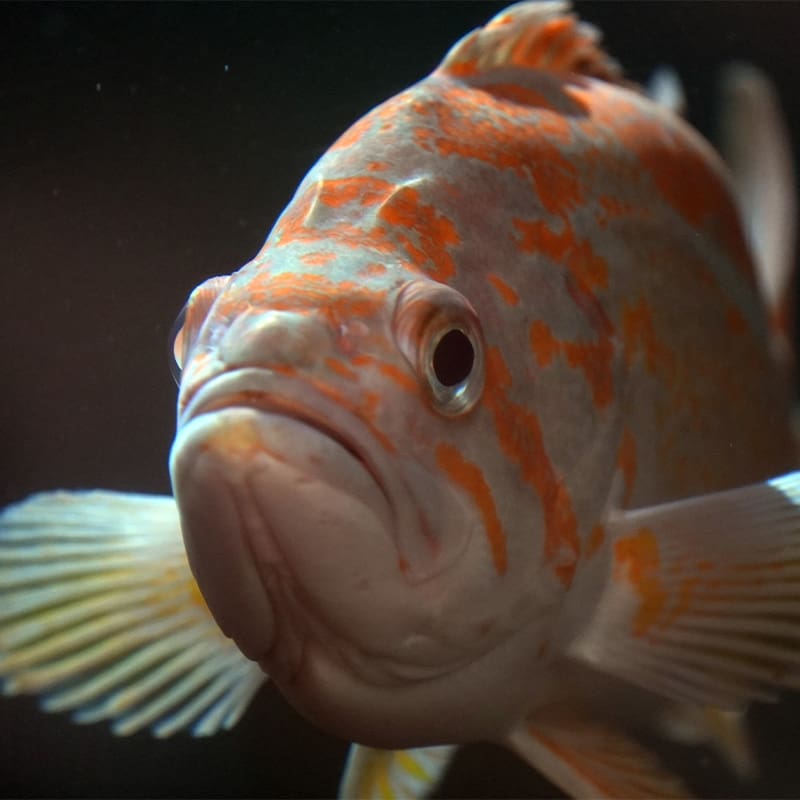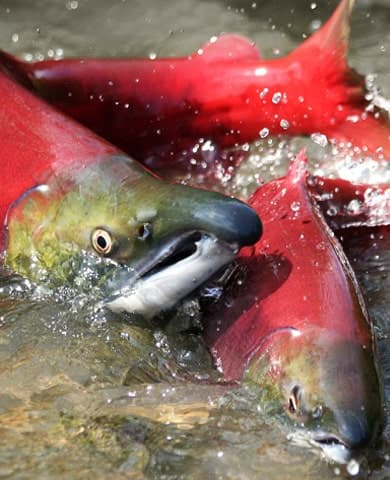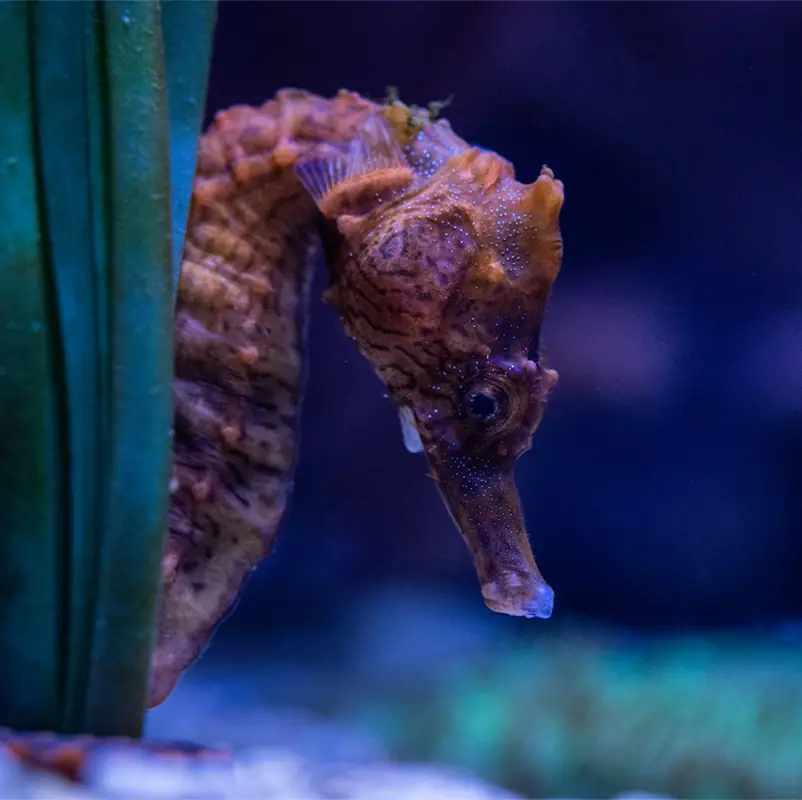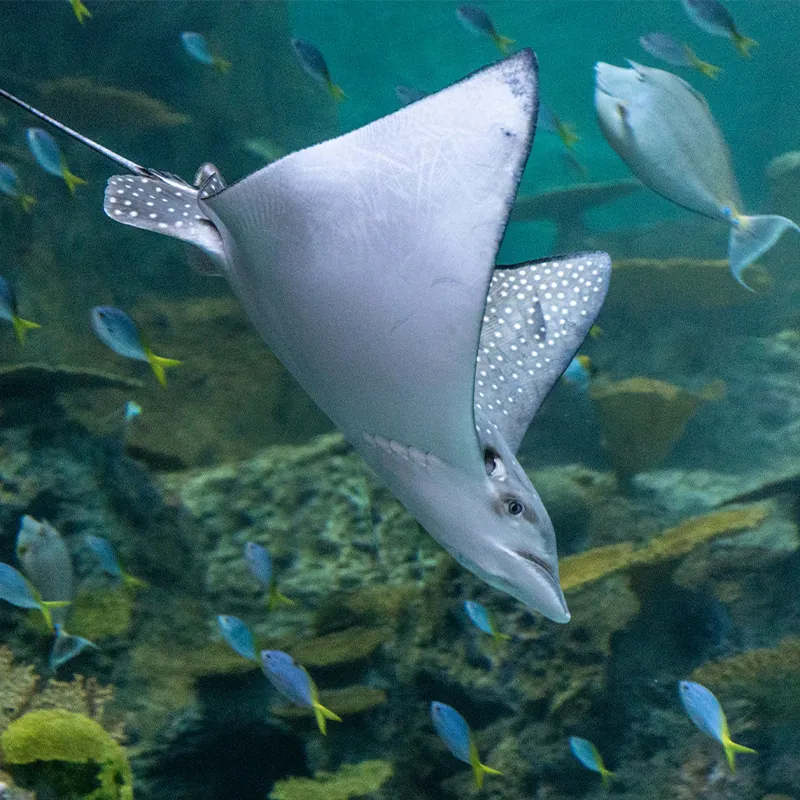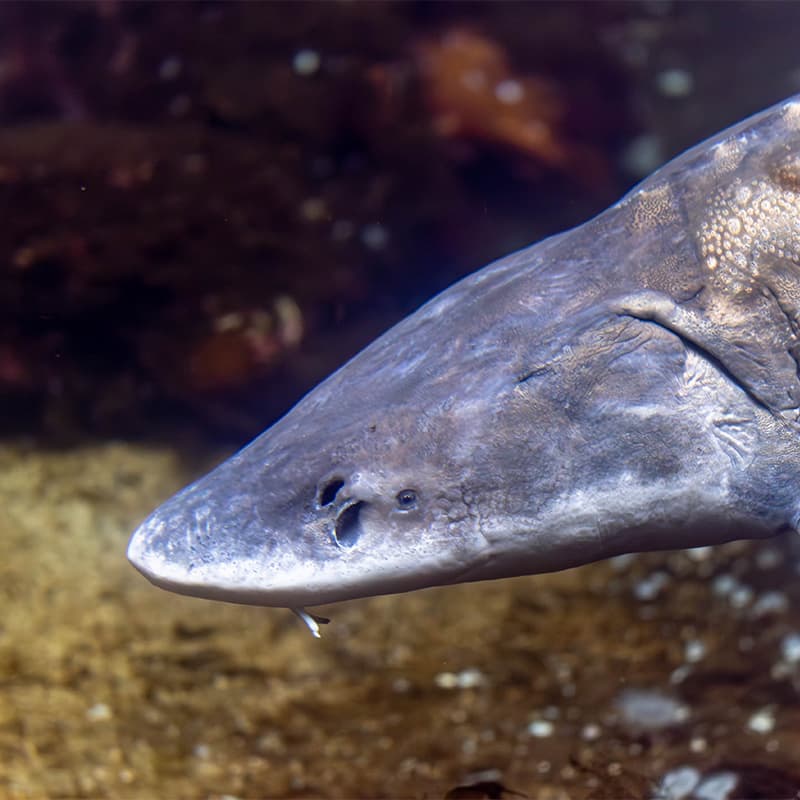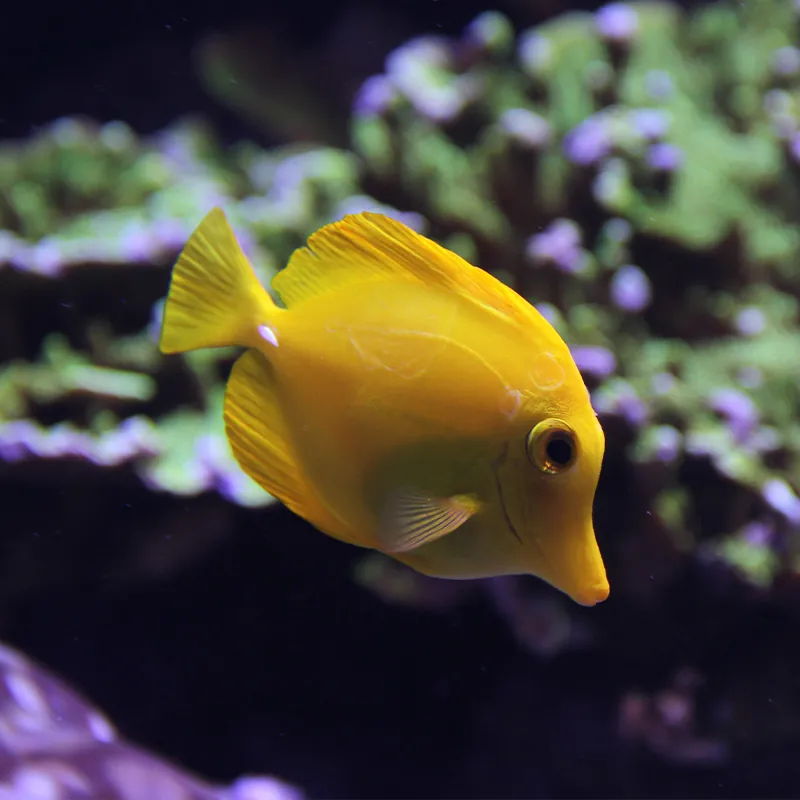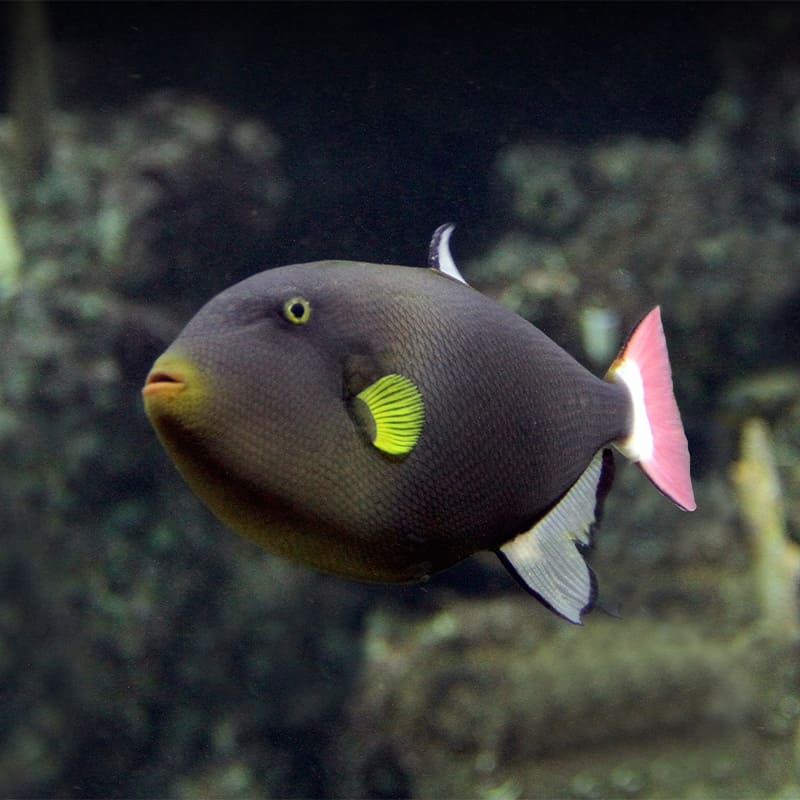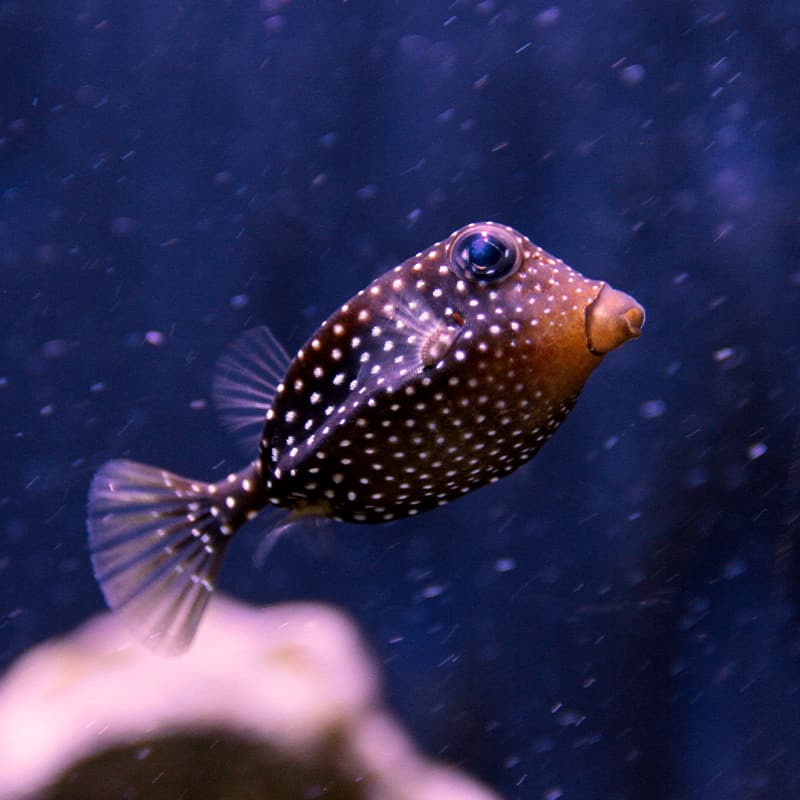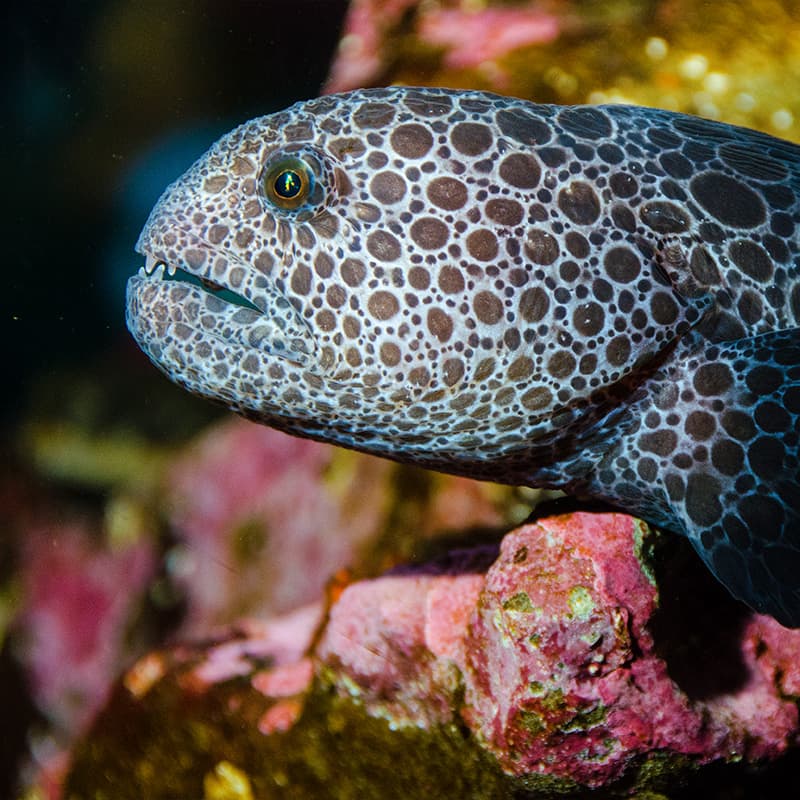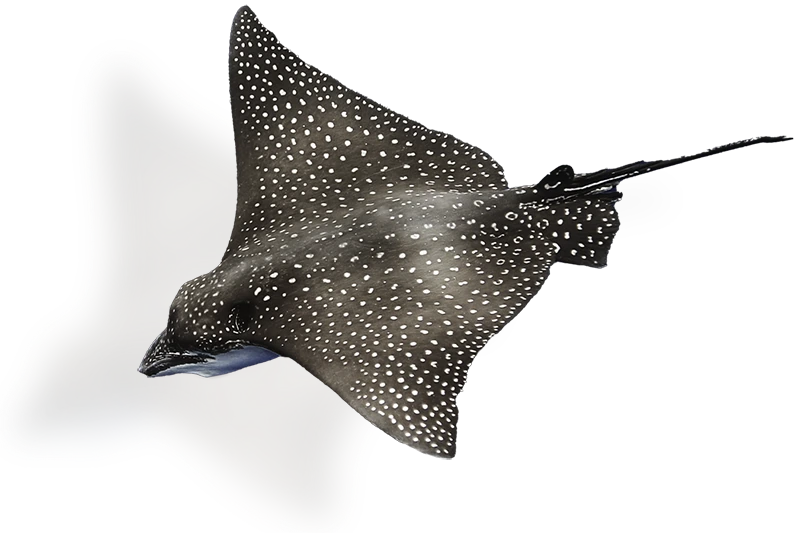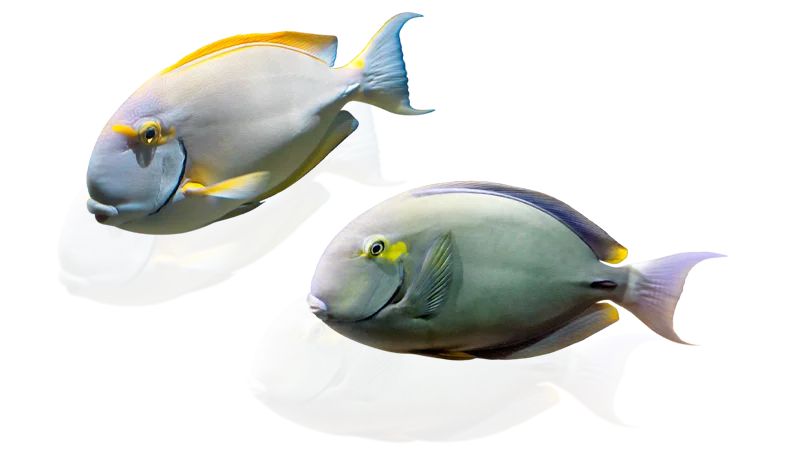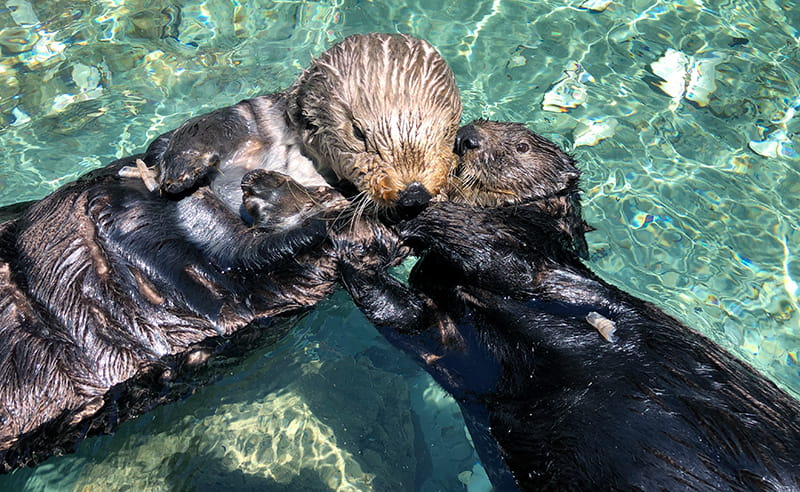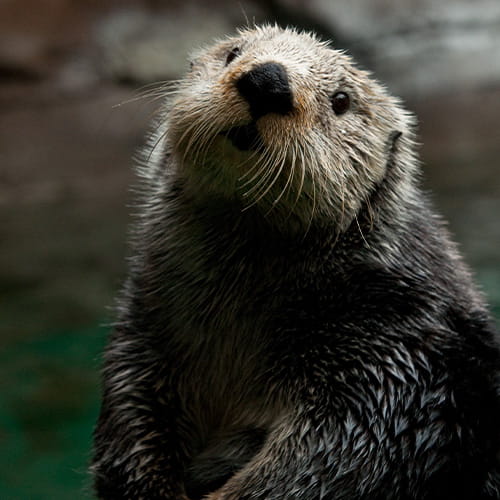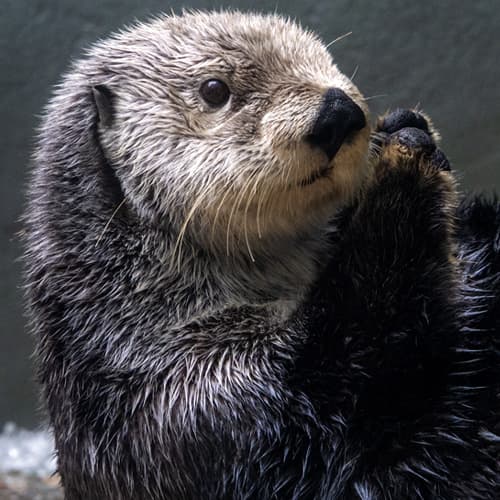- Fish
Pipefish
These seahorse cousins stand out—and blend in
Pipefish do things their way. Cousins of seahorses and seadragons, they slurp plankton, imitate eelgrass and sometimes swim upright. Males—not females—are the ones that give birth to pipefish hatchlings.
At the Aquarium
- At Home in the Ocean, Ocean Pavilion
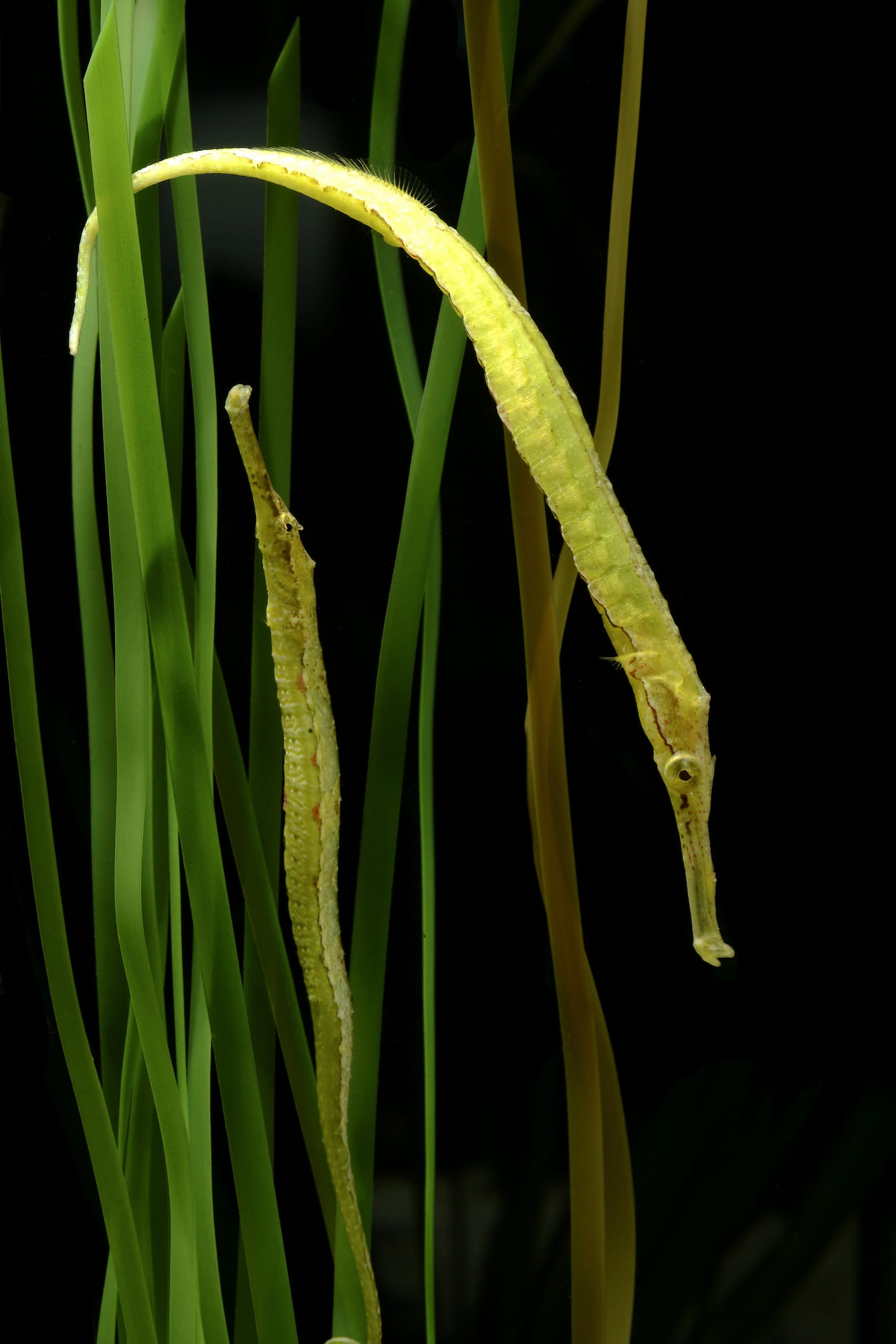
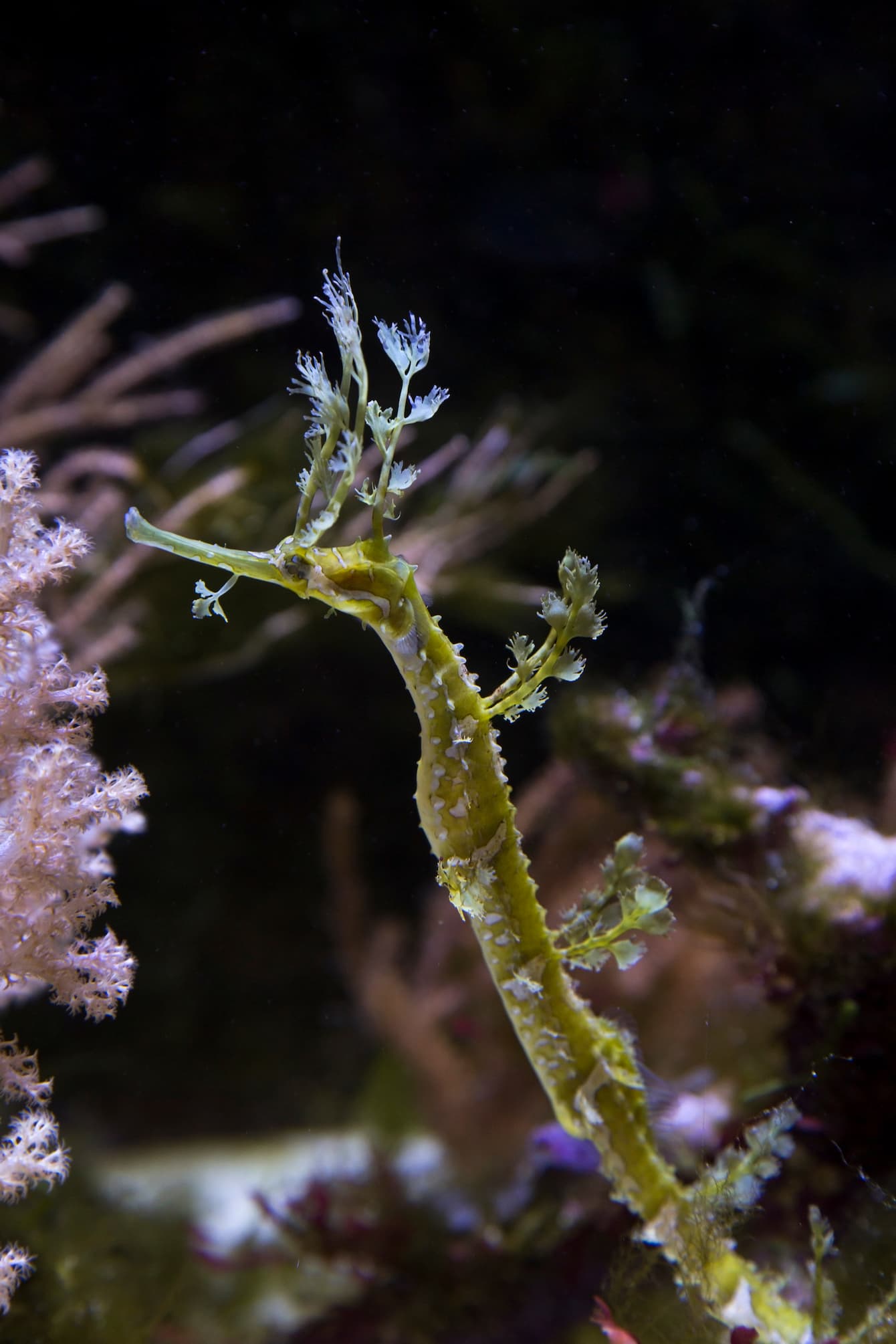
Just another blade in the seagrass
In place of scales, jointed bone-like rings encircle the pipefish’s slender body—which, in temperate waters, can easily be mistaken for a blade of seagrass. Found in tropical waters as well, these fish can grow to be up to 13 inches long, including the long, prehensile (capable of grasping) tail that they use to anchor themselves while hunting for prey. Their narrow heads have a long snout and a small, tube-like mouth with a fused jaw and no teeth.
Slurps up!
Pipefish are carnivores that eat tiny crustaceans, fish, fish eggs and zooplankton (microscopic animals). They rely on their shape and color, plus some tricky vertical swimming and shimmying, to blend in with their surroundings before they sneak up on their prey. So, how do pipefish eat with jaws that barely open and mouths that have no teeth? They slurp their food using the long, straw-like tube in their snout.
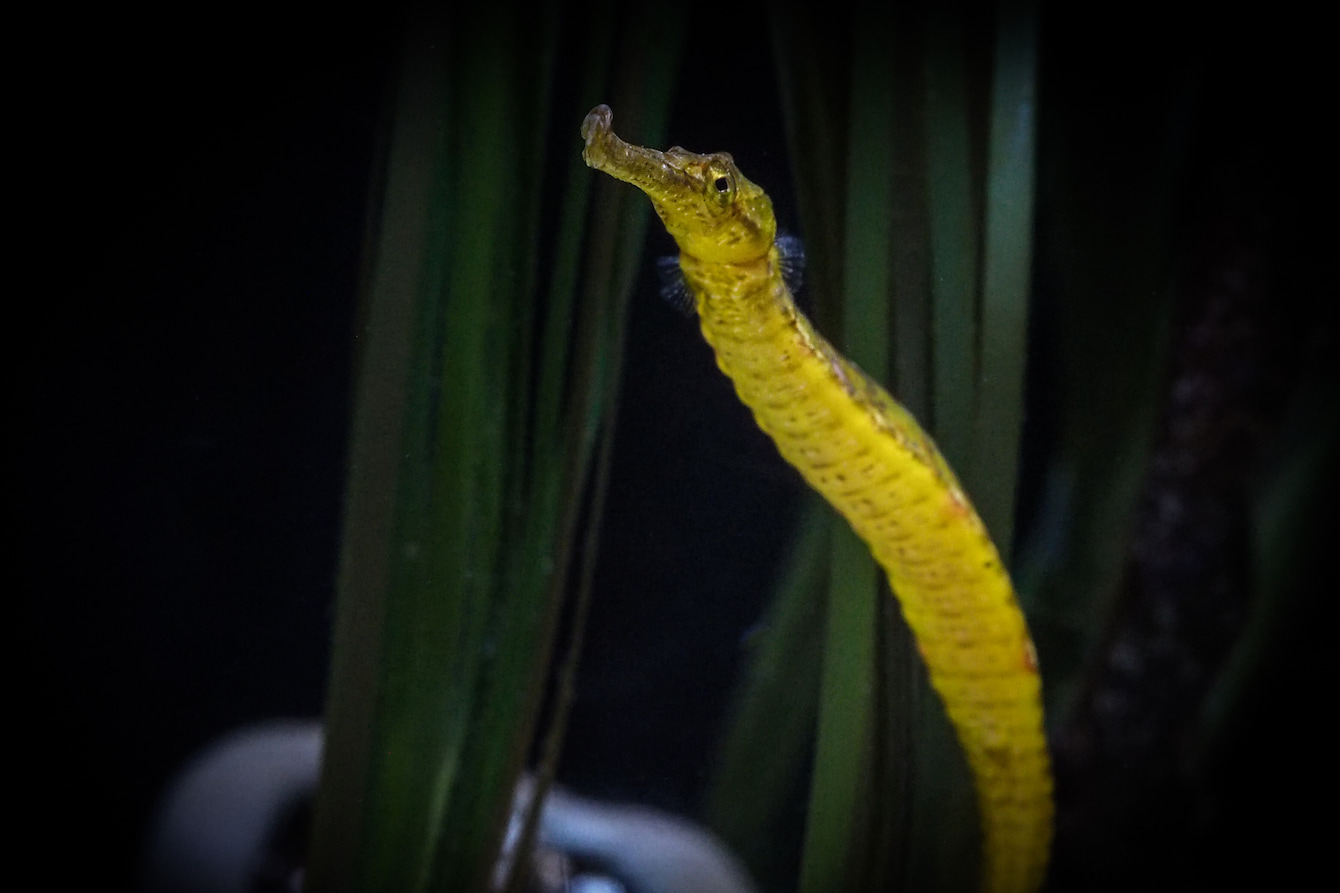
Who fishes for pipefishes?
With a few exceptions, animals in the ocean (and on land) are both predator and prey. It’s how food webs work. If you can’t outrun predators, you’re in trouble—or you need another strategy. Pipefish are slowpokes. They wiggle their three tiny fins to slowly swim close to their next meal, but can’t dash away from faster, hungry animals. Their coloration and ability to blend in help them survive.
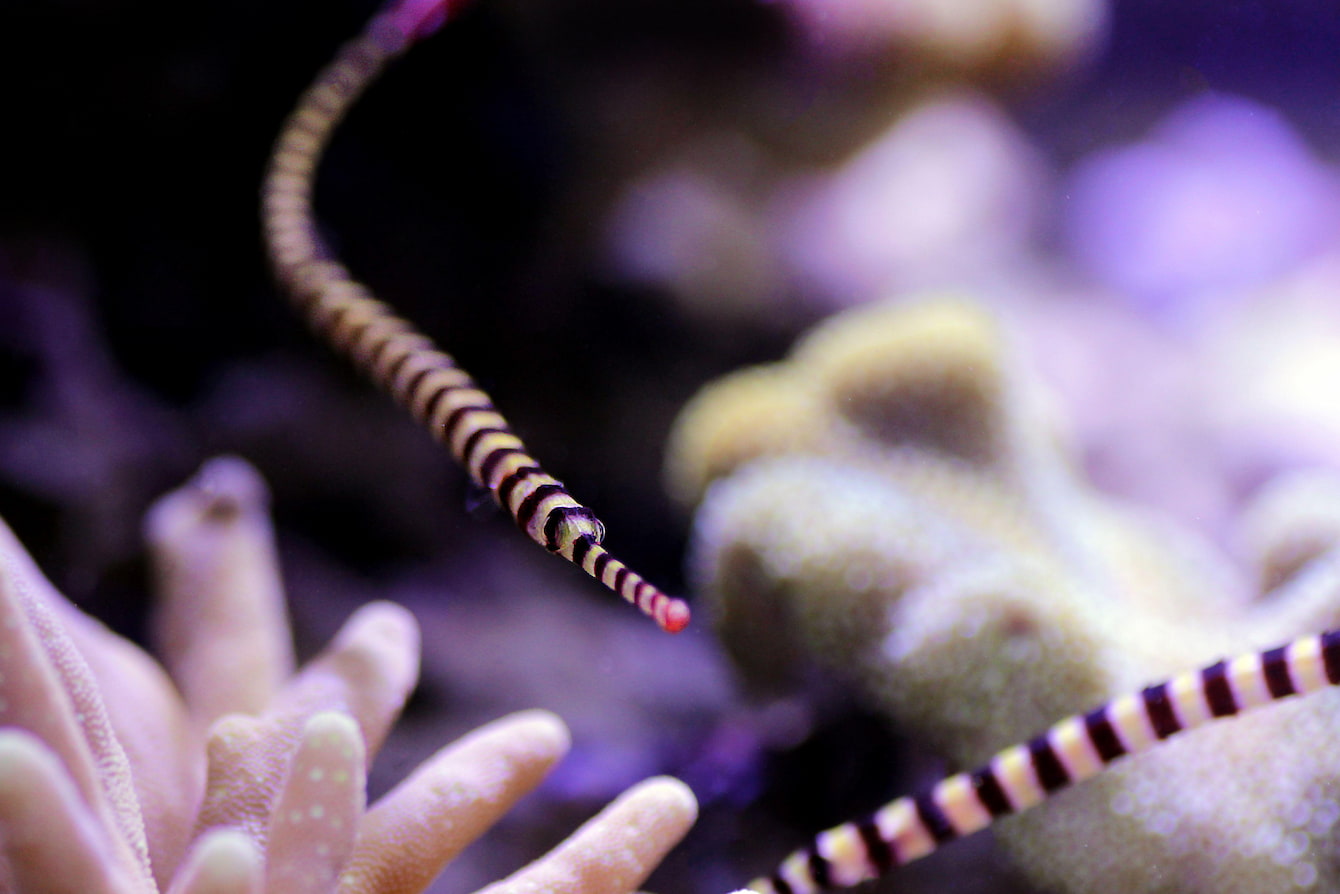
Co-parents of the year
Like their seahorse relatives, pipefish are ovoviviparous (oh-voveh-VIP-er-us), which means their eggs develop within the female but hatch from the male. The female leads an elaborate courting ritual, then places the fertilized eggs in the brood pouch on the underside of her chosen male's body. He incubates the eggs—providing nourishment from his own abdominal wall—until releasing them to hatch as miniature versions of grown pipefish.
Healthy habitat, happy pipefish
All animals need a healthy habitat to thrive. While not listed as endangered, pipefish are impacted by habitat loss due to human activity, pollution and climate change. You can make a difference for pipefish—and all the living things in our one world ocean—by taking individual actions like conserving water and using less gas, and lending your voice to collective actions to protect the marine environment. Visit our Act for the Ocean webpage for details!
Quick facts
Pipefish swim slowly and steer by moving their heads from side to side.
Males incubate and release eggs when they’re ready to hatch.
Pipefish have tails that are capable of grasping, which they use to anchor themselves when hunting for food.
